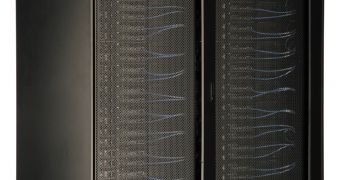The National Center for Atmospheric Research (NCAR) announced earlier today that IBM will install critical components of a petascale supercomputing system that will help scientists improve our understanding of Earth.
The new system, appropriately named Yellowstone, runs on an IBM iDataPlex supercomputer and consist of a massive central resource for file and data storage, a HPC cluster, and the required resources for visualizing the data gathered.
The system is based on Intel's upcoming Intel Sandy Bridge EP processors and a Mellanox FDR InfiniBand interconnect.
When it will be completed by IBM, it will include 149.2 terabytes of memory and 74,592 computing cores, while Yellowstone's central file system will have nearly 17 petabytes of usable disk space, 12 times what is available to NCAR's scientific research community today.
These will be joined by a DAV resource made up of two systems, one designed to facilitate large-scale data analysis, and the other for parallel processing and visualization activities.
"NCAR has a longstanding tradition for excellence in deploying resources to address unique challenges requiring high-performance computing capabilities," says David Jursik, vice president of high-performance computing at IBM.
"Yellowstone will substantially expand NCAR's ability to investigate climate change, severe weather events, and other important subjects.
“We are pleased to be selected as IBM continues to pursue high-performance computing for the purpose of helping scientists and leading decision makers address critical issues for a smarter planet," concluded the company's rep.
Yellowstone is expected to deliver 1.6 petaflops performance, or nearly 30 times the capacity of the system currently in use at NCAR's Mesa Laboratory in Boulder, known as Bluefire.
Once installed, the system will go through a testing period before being made fully available for scientific research in the summer of 2012.

 14 DAY TRIAL //
14 DAY TRIAL //